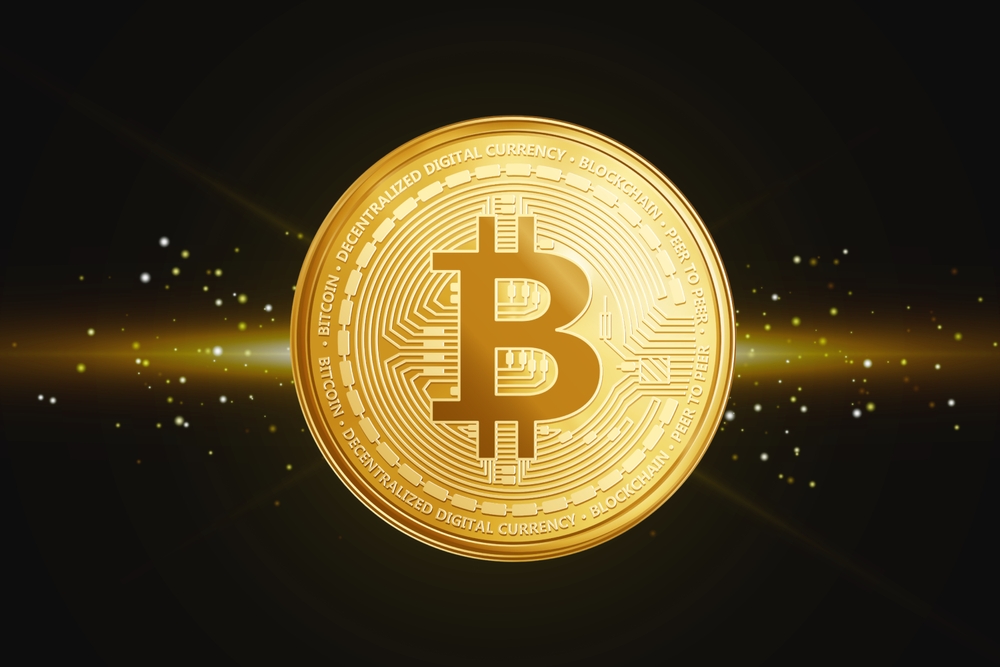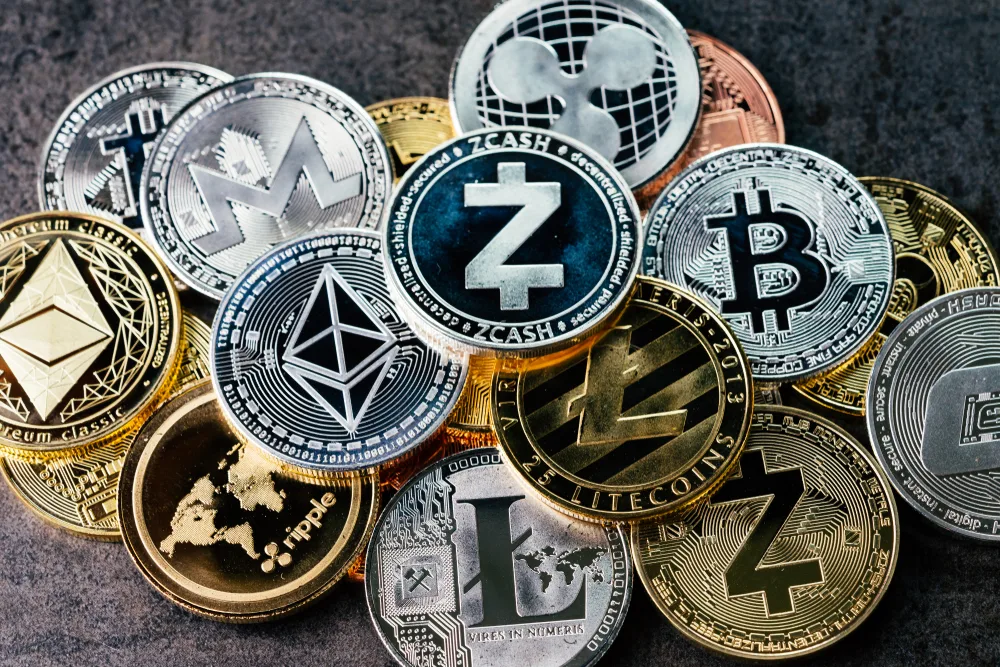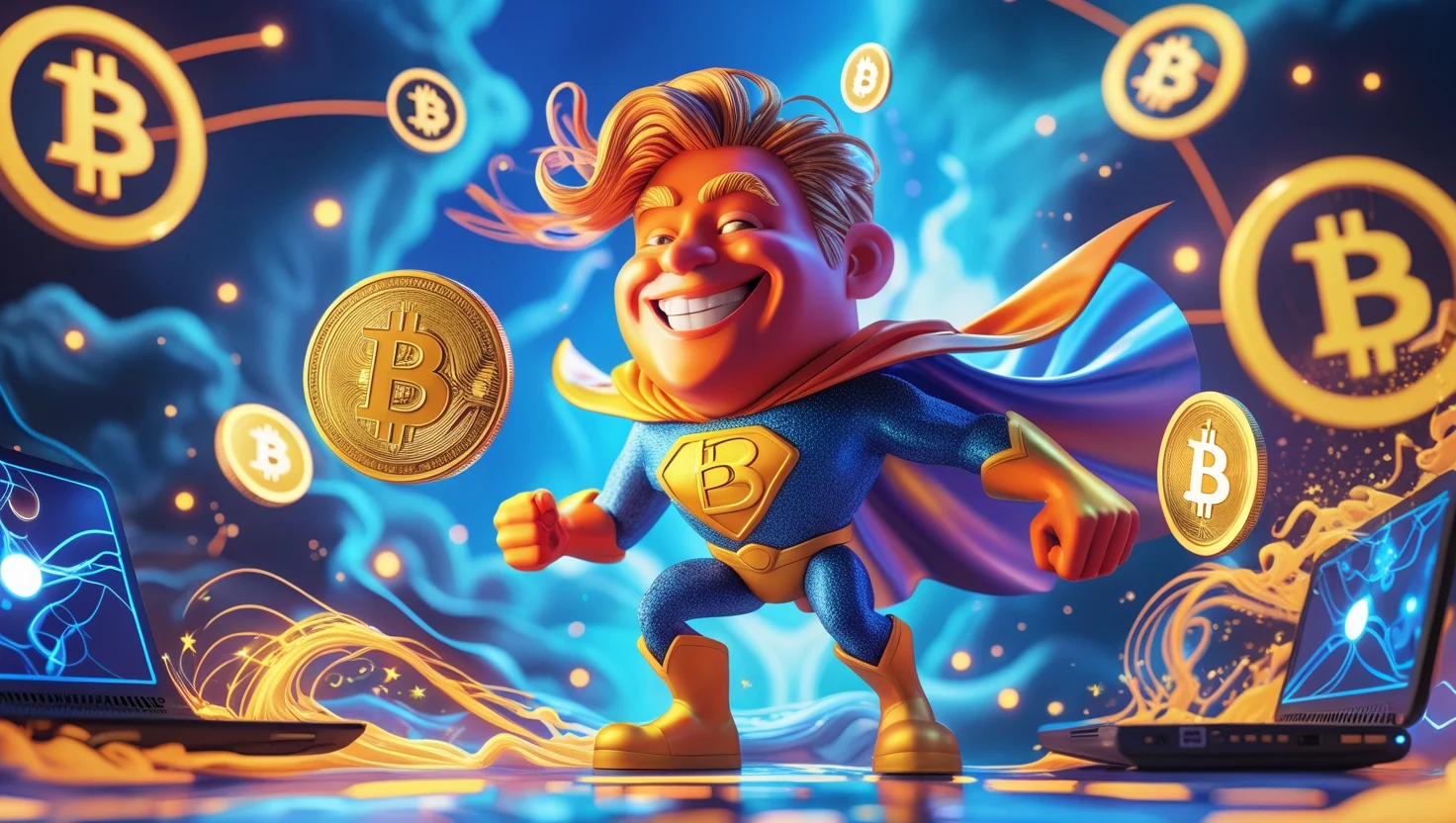Introduction to Bitcoin

Bitcoin has revolutionized the way we think about money and finance. Often called “digital gold,” it has challenged traditional financial systems, introducing decentralization and transparency through blockchain technology. Since its creation in 2009, Bitcoin has gone from a niche experiment to a globally recognized asset. But what exactly is Bitcoin, and how did it evolve into the powerhouse it is today? This article delves deep into its history and progression.
The Birth of Bitcoin
The Genesis Block

Bitcoin’s story begins on January 3, 2009, when its enigmatic creator, Satoshi Nakamoto, mined the first-ever block of Bitcoin, known as the Genesis Block. Embedded within this block was a cryptic message: “The Times 03/Jan/2009 Chancellor on brink of second bailout for banks.” This statement highlighted the financial crisis of the time and underscored Bitcoin’s purpose: to provide an alternative to traditional banking.
The Mysterious Satoshi Nakamoto
The identity of Satoshi Nakamoto remains one of the greatest mysteries in the tech world. Whether Satoshi is an individual or a group is still unknown. Nakamoto introduced Bitcoin to the world in a whitepaper titled “Bitcoin: A Peer-to-Peer Electronic Cash System,” laying the groundwork for the first decentralized cryptocurrency.
READ MORE – How to Choose the Best Trading Platform in 2025?
How Bitcoin Works

The Blockchain Technology
At the heart of Bitcoin lies blockchain technology—a decentralized ledger that records all transactions transparently and immutably. This innovation ensures that every transaction is secure and cannot be altered retroactively, a feature that sets Bitcoin apart from traditional banking systems.
Decentralization and Mining
Bitcoin operates on a decentralized network, meaning no single entity controls it. Miners play a crucial role in maintaining the network by validating transactions and adding them to the blockchain. In return, miners are rewarded with newly minted Bitcoin, a process known as mining.
READ MORE – Top Trading Strategies for Expert Traders | A Complete Guide
Bitcoin in Its Early Days
The First Bitcoin Transactions
The first Bitcoin transaction took place on January 12, 2009, between Satoshi Nakamoto and Hal Finney, a prominent cryptographic pioneer. Finney received 10 Bitcoins, marking the start of Bitcoin’s journey as a transactional currency.
Adoption Among Early Enthusiasts
Initially, Bitcoin was embraced by a small group of tech enthusiasts and libertarians who saw its potential to disrupt traditional finance. These early adopters laid the foundation for Bitcoin’s later growth by exploring its applications and spreading its message.
Key Milestones in Bitcoin’s Journey
Bitcoin Pizza Day
On May 22, 2010, a programmer named Laszlo Hanyecz made history by purchasing two pizzas for 10,000 Bitcoins—valued at billions today. This transaction, known as Bitcoin Pizza Day, symbolizes Bitcoin’s transition from an experimental concept to a usable currency.
Bitcoin’s First Exchange
The first Bitcoin exchange, BitcoinMarket.com, was established in March 2010. It allowed users to trade Bitcoin for US dollars, further legitimizing the cryptocurrency and establishing a marketplace for its growing user base.
READ MORE – 5 Technical Indicators Every Trader Should Know | Capital Street FX
The Evolution of Bitcoin as a Currency

Price Volatility and Market Trends
Bitcoin’s price has experienced dramatic fluctuations, from a few cents in its early days to an all-time high of over $68,000 in 2021. These price swings have attracted investors and speculators alike, solidifying Bitcoin’s position as a high-risk, high-reward asset.
Bitcoin’s Role in E-commerce
Bitcoin has been increasingly adopted as a payment method by businesses worldwide. Major companies like Microsoft, Overstock, and Tesla have accepted Bitcoin for transactions, boosting its credibility as a digital currency.
Bitcoin and Regulation
Governments’ Early Reactions
Bitcoin’s decentralized nature posed a challenge to governments and financial institutions worldwide. Early reactions ranged from skepticism to outright bans. Countries like China and India took a hard stance against Bitcoin, while others like Japan and the United States explored regulatory frameworks to accommodate the burgeoning cryptocurrency market.
Current Legal Frameworks
Today, the legal status of Bitcoin varies significantly across the globe. In some countries, it is recognized as legal tender or a commodity, while in others, it is outright banned. Governments and regulatory bodies are continually adapting to the rapid evolution of cryptocurrencies, focusing on issues like taxation, money laundering, and consumer protection.
READ MORE – How to Trade Bitcoin Like a Pro in 2025 | Expert Tips & Strategies
The Rise of Altcoins

How Bitcoin Inspired New Cryptocurrencies
Bitcoin’s success paved the way for thousands of alternative cryptocurrencies, commonly referred to as altcoins. Ethereum, Ripple (XRP), and Litecoin are some notable examples that introduced new functionalities, such as smart contracts and faster transaction processing.
Competing Technologies and Features
While Bitcoin remains the most prominent cryptocurrency, altcoins have addressed some of its limitations. For instance, Ethereum offers programmability through smart contracts, and Litecoin boasts faster transaction speeds. These innovations have created a diverse and competitive crypto ecosystem.
Bitcoin in Popular Culture
Media Attention
Bitcoin has been a focal point in media coverage, from stories of overnight millionaires to cautionary tales of lost fortunes. Movies, documentaries, and TV shows like “Banking on Bitcoin” have further brought cryptocurrency into the mainstream, sparking curiosity and debate.
Impact on Financial Discourse
The rise of Bitcoin has also influenced how people talk about finance. Concepts like decentralization, blockchain, and digital assets are now part of everyday conversations, highlighting Bitcoin’s profound impact on financial literacy and innovation.
READ MORE – The Biggest Events of 2024 – A Capital Street FX Review
Bitcoin’s Impact on the Global Economy

Financial Inclusion
One of Bitcoin’s most significant promises is financial inclusion. It provides access to banking-like services for unbanked populations, particularly in developing countries where traditional financial systems are underdeveloped.
Challenges to Traditional Banking
Bitcoin has disrupted the traditional banking model by offering peer-to-peer transactions without intermediaries. This shift challenges banks’ roles in payment processing and currency control, forcing the financial industry to innovate to stay relevant.
Major Controversies Surrounding Bitcoin
Environmental Concerns
Bitcoin mining is energy-intensive, leading to criticism about its environmental impact. The process consumes significant electricity, often sourced from non-renewable energy, raising questions about sustainability.
Security and Fraud Issues
Despite its robust security measures, Bitcoin is not immune to fraud and scams. High-profile incidents, like the Mt. Gox exchange hack in 2014, have exposed vulnerabilities in the crypto ecosystem and emphasized the need for better security practices.
READ MORE – Bitcoin Falls Below $94K as Fed Maintains Hawkish Tone
Technological Advancements in Bitcoin
Lightning Network
The Lightning Network is a second-layer solution designed to improve Bitcoin’s scalability by enabling faster and cheaper transactions. It addresses Bitcoin’s limitations in handling high transaction volumes, making it more viable for everyday use.
Improved Scalability Solutions
Ongoing research and development aim to make Bitcoin more efficient and scalable. Segregated Witness (SegWit) and Taproot are notable upgrades that enhance Bitcoin’s functionality and privacy.
Bitcoin as a Store of Value

Comparison with Gold
Bitcoin is often compared to gold due to its scarcity and role as a hedge against inflation. Unlike fiat currencies, Bitcoin’s supply is capped at 21 million coins, making it a reliable store of value in uncertain economic times.
The Concept of Digital Scarcity
Digital scarcity is a revolutionary idea introduced by Bitcoin. By combining cryptographic security with a limited supply, Bitcoin creates a form of digital wealth that is resistant to manipulation and devaluation.
READ MORE – DAILY FOREX, CRYPTO AND COMMODITY FUNDAMENTAL & TECHNICAL ANALYSIS
The Future of Bitcoin
Predictions for Bitcoin’s Adoption
Experts predict that Bitcoin will continue to gain acceptance as both a currency and an investment. With increasing institutional interest and technological improvements, Bitcoin could become a cornerstone of the digital economy.
Potential Challenges
Despite its potential, Bitcoin faces challenges such as regulatory hurdles, competition from altcoins, and environmental concerns. Addressing these issues will be critical to its long-term success.
Conclusion
From its humble beginnings in 2009 to its status as a global financial phenomenon, Bitcoin’s journey is nothing short of remarkable. It has transformed how we think about money, challenging traditional systems and introducing innovative technology. While its future remains uncertain, Bitcoin’s impact on the world of finance and beyond is undeniable. Whether you’re a skeptic or a supporter, Bitcoin’s story is one worth understanding.
FAQs
1. What is Bitcoin, and how does it work?
Bitcoin is a decentralized digital currency powered by blockchain technology. Transactions are verified by miners and recorded on an immutable ledger, making it secure and transparent.
2. Who created Bitcoin?
Bitcoin was created by Satoshi Nakamoto, a pseudonymous figure or group whose identity remains unknown.
3. Why is Bitcoin so volatile?
Bitcoin’s volatility stems from its limited supply, speculative nature, and market sentiment. External factors like regulatory news and adoption rates also influence its price.
4. Is Bitcoin environmentally friendly?
Bitcoin mining consumes significant energy, often from non-renewable sources. However, efforts are underway to promote sustainable mining practices.
5. Can Bitcoin replace traditional currencies?
While Bitcoin offers an alternative to traditional currencies, its widespread adoption as a primary currency faces challenges like scalability and regulatory acceptance.

